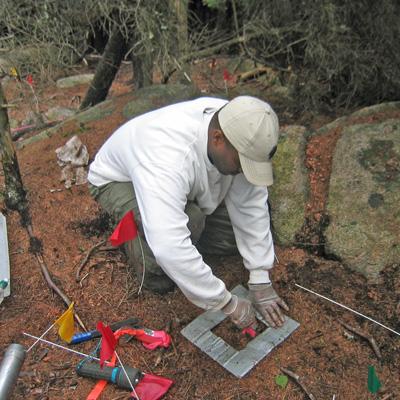Does Elevated N Depostion Alter Fine Root Growth, Metabolism and Turnover in North Temperate and Boreal Forest Ecosystems?

Human activities, such as fossil fuel combustion and high-intensity agriculture, have increased inputs of nitrogen to the atmosphere far above natural inputs. Nitrogen falls as deposition and accumulates in forest soils. Eventually, it may exceed the nutritional needs of the forest and trigger leaching of other valuable soil nutrients, or cations.
NSRC researchers needed to better understand the response of fine roots to elevated inputs of atmospheric nitrogen deposition in north temperate and boreal forest ecosystems. Researchers conducted a meta-analysis of fine root response to experimentally-elevated nitrogen deposition at a range of sites in North America and Europe. They also collected and analyzed roots and soils from cores collected on an annual basis for 2002, 2003, and 2004 and measured soil respiration and root elongation and turnover on a monthly basis for 2003 and 2004 at three long-term research sites in northeastern North America (Bear Brook Watershed in Maine, Harvard Forest in Massachusetts, and Mount Ascutney in Vermont).
Results from both the meta-analysis and field experiments showed that experimentally-elevated nitrogen additions resulted in a generalized syndrome of decline in fine root length and biomass, changes in fine root tissue chemistry (including increases in fine root nitrogen and decreases in fine root base cation concentrations) and parallel changes in soil chemistry. These results suggest that chronic nitrogen deposition in northern forest ecosystems may result in root systems that are highly susceptible to secondary effects of drought, nutrient depletion, and/or pests and pathogens.
